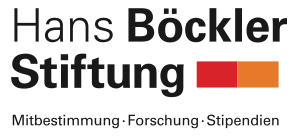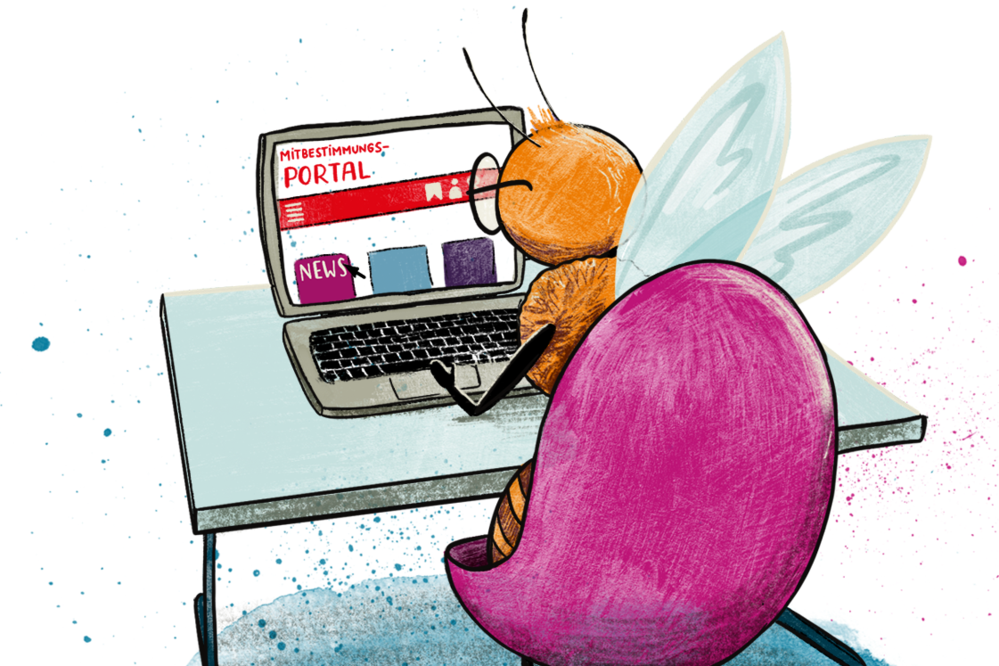Column
Helping gig workers help themselves
From new technologies to new organizing methods, tools and training for gig workers: Support is starting to emerge. Will it help? Will organized labor in the US pitch in?
Gig workers emerged from an economy flattened by the contraction of 2008-9, which saw massive layoffs and a growing reserve labor pool. In the midst of that crisis, Silicon Valley companies saw a huge opportunity to use smartphones to connect under-employed workers with new forms of precarious work. The so-called “sharing” economy turned out to be not so sharing, but in the absence of better jobs, the ranks of gig workers swelled.
These gig workers are expected to work as independent contractors (also known as freelancers or solo self-employed), which means they are on their own in terms of negotiating their wages, social benefits, job security and ongoing training. During the Covid pandemic, these trends intensified and became more widespread.
In reaction to the pandemic, some worker-allied organizations in the US have tried to fill the gaps in support and services. These organizations also are filling a vacuum that has resulted from US labor unions not focusing much attention or resources on helping gig workers (as “independent” contractors, these workers are difficult to organize under US labor law). In Germany, labor unions have established services and resources, such as IG Metall’s Fair Crowd Work, the Food, Beverages and Catering Union’s (NGG) “Liefern am Limit” campaign in support of food deliverers, and ver.di’s ongoing efforts. But in the US, the AFL-CIO and its affiliated unions, with rare exceptions, have taken more of a “stand back and wait” approach.
So worker-allied organizations, often run by non-union workers themselves, have stepped into the breach. And they are doing it in smart ways, targeted to the unique needs of these types of workers.
New apps for the app-employed
For example, during the COVID-19 pandemic, unlike in Germany and other EU member states which utilized extensive short-work furlough schemes to prevent massive layoffs, the US laid off tens of millions of workers and unemployment rose as high as 14.8%. Fortunately the US provided more generous-than-usual unemployment benefits. And for the first time ever, gig workers and other freelancers qualified for those unemployment benefits.
But this well-meaning law turned out to be difficult to implement. Gig workers typically work for a variety of employers and labor platforms, and many have a hard time gathering and submitting all of their income information. So proving their eligibility, or maximizing their benefits, was challenging. In addition, unemployment is administered by the 50 US states, which are not set up bureaucratically to easily verify applicants' income from gig work. That delayed initial claims and created months-long backlogs, leaving many workers with insufficient financial security during the pandemic.
The Workers Lab developed a technology solution to verify income from gig work.
A clear need was evident, to help these workers track and prove the amount of their wages. The Workers Lab, a partially labor-funded nonprofit organization located in the San Francisco Bay area, developed a technology solution to verify income from gig work. They partnered with a financial technology company that created a database that allows gig workers to report and then have unprecedented access to their past income from multiple sources. It also makes tracking of a gig worker’s expenses – which can be deducted from their income taxes as a “business of one” – easier and more straightforward. To develop this product, the Workers Lab teamed up with workers from the Philadelphia Drivers Union and Gig Workers Rising, both relatively new organizations not affiliated with any labor union, to ensure that their solution was fully informed by the needs of gig workers themselves.
The Workers Lab also talked to state governments to develop the concept of an “income passport” that would help state governments to better track these workers’ diverse income sources. The passport can be used to automate ongoing income reporting, reducing the challenge on workers who need to report income to determine eligibility for unemployment or other benefits.
$50 billion in wages are stolen from US workers each year.
Another group, the Immigration Advocates Network based in New York City, developed an online tool called ¡Reclamo! that was designed to help workers and organizers better identify bad employers who engage in wage theft. A study by the Freelancers Union found that 71% of freelancers struggle to collect payment for work completed, and the average unpaid freelancer loses almost $6000 annually (13% of their total income) because some employers refuse to pay them; IAN estimates that $50 billion in wages are stolen from US workers each year. For many gig workers, wage theft is a pressing concern.
So the Immigration Advocates Network created ¡Reclamo! to facilitate better data collection on bad employers, and to bridge access to legal support. It allows IAN and workers to initiate the wage recovery process and identify opportunities for organizing. It also allows them to use data to take on large claims and detect patterns of wage abuse among employers. IAN’s goal is to make “wage theft recovery free, safe, and simple.” Reclamo was developed in partnership with workplace justice advocates from Make the Road New York, and can also be used by workers and non-lawyer advocates to figure out the complexities of employment law, right from the convenience of their smartphones. IAN Director Rodrigo Camarena says their tool is the first wage claim filing tool designed for and by workplace justice advocates. “Our goal is to significantly reduce the prevalence of wage theft in America, and use the power of data and organizing to design fairer workplaces.”
Online organizing of food deliverers and workers
Another group, Los Deliveristas Unidos, has started organizing online as a support presence for a rapidly expanding collective of app-based food delivery workers, most of them Latino, in New York City. They are developing very practical online resources and information, such as what you should do in case of a bicycle accident while delivering, how to deal with bike theft, how to keep working during Covid, maps of the locations of public restrooms around the city (since deliverers need to know where they can find a toilet), and other useful guides and resources. Director Ligia Guallpa says they are “working to create a first-in-the-country infrastructure hub for delivery workers that offers them help with all aspects of their work,” including improvements to worker policies, a digital online place for them to connect, and the development of a community that can organize politically to win improvements. LDU organized a march of 3,000 deliveristas (Spanish for “delivery workers”) and has partnered with New York City councilmembers to introduce six bills that improve working conditions and pay equity for the deliveristas.
Some of these workers organizations have benefited from the development of organizing software called Solidarity Tech. ST is kind of a “Facebook for organizing,” an all-in-one, deep organizing platform for unions and progressive organizations. It has a mission of creating software “for building people-powered mass movements,” and does that by facilitating traditional member-facing communications, designing an organizers app and an administrative dashboard coupled with a contact relationship management (CRM) system that enables groups to organize and connect to their networks faster and more efficiently. Solidarity Tech is a new digital product, but it is already being used by Rideshare Drivers United.
A goal of the app is to help users become informed worker leaders
United for Respect, a multiracial alliance of 16 million people fighting to improve the lives of retail workers, has taken on the likes of Walmart and Amazon. Now it has developed a new set of digital technology tools called WorkIt. WorkIt is an app that helps organizers connect with their members, and helps members get answers to questions about workplace rights from trusted and trained peer advisors. A goal of the app is to help users become informed worker leaders, and provide data about levels of engagement among community members – who is engaging, who they are engaging with, what actions they have taken, and what additional leadership activities they might need. These tools allow organizers to connect with users much more effectively, and with far less manual oversight and management. Cat Huang, a computer scientist and chief technology officer for UFR, says “with the right tools, and the right insight, we can change how people participate in our society, economy and our democracy.”
A fair amount of this digital tool development has been partially funded by the Workers Lab, which follows a Silicon Valley accelerator model, providing seed money to nascent worker organizations. Since 2015, Workers Lab has invested more than $11 million in dozens of organizations to spawn such innovation, itself receiving funding from some labor organizations as well the Bill Gates and Eric Schmidt foundations. It also has partnered with others such as the Aspen Institute’s “Future of Work Initiative” to better understand the needs of gig workers and independent contractors, so that these new digital products being developed will be targeted and effective.
Classes to learn how to gig
Another interesting development is called the Self-Employment Pathways in the Gig Economy Pilot Project. It was launched in 2018 by California’s community college system, with 20 colleges participating in a pilot to prepare students for freelancing employment in the gig economy. Each community college created a three-course program, the first of which focused on how to run a small “business of one”, including basic topics like licensing, insurance, and taxes. The second course explored how to use online freelancing platforms like Upwork and Fiverr, through which students could learn how to choose a platform, how to secure work opportunities, and when to walk away from jobs (such as when the employer is trying to cheat you). The third course was experiential, allowing students to work one-on-one with a mentor who provided business planning and consulting support, and guided students to launch or improve their own business.
One of the major challenges of freelancers and gig workers is accessing a supportive safety net. To assist precarious workers, the city of San Francisco recently approved a mini-portable safety net system to guarantee paid sick leave for the roughly 10,000 domestic workers in the city (home aides, nannies and house cleaners). The new law, drafted with the input of the California Domestic Workers Coalition, uses a smartphone-based app to help ensure that employers meet their legal mandate to provide at least one hour of paid sick leave for every 30 hours of work. With a bare-bones portable safety net established, other components such as health care or retirement can be added over time, and possibly other occupations included (on a personal note, this innovation in my hometown is especially gratifying, because I was the first policy expert in the US to propose a portable safety net for freelance workers in 2015, which then-President Barack Obama endorsed in his 2016 State of the Union address and business, labor and NGO leaders began to promote).
These digital innovations also could be replicated in Germany and the EU
These new digital tools, supports and training for gig workers and freelancers are a welcome development. It makes a lot of sense to adapt digital technologies in support of the needs of precarious workers, though these efforts are new so it remains to be seen if they succeed in making these workers’ lives much better. Most of this work is being done by nonprofit organizations, which raises the question – why aren’t US labor unions taking the lead on developing more of these kinds of supports? Some of the nonprofits receive small amounts of funding from unions, but organized labor could exert a lot more influence.
These digital innovations also could be replicated in Germany and the EU, where labor laws are stronger than in the US, yet the logistical challenges of organizing a “distributed workforce” are nonetheless considerable. Focusing the startup culture of Berlin and Hamburg on creating apps for gig workers and freelancers seems like a natural fit. And Germany has yet to create much of a portable safety net for its large solo self-employed workforce, which could be modeled after its Künstlersozialkasse system of welfare support for artists, journalists and musicians. German labor unions also could be doing more to ensure that the gig economy doesn’t become a massive loophole of “bogus self-employment” through which businesses undermine good jobs and worker empowerment. But the prime responsibility falls on legislators themselves, whether in Germany or the US, to pass laws that classify freelancers like gig workers as “employees,” and foster the conditions and harness the digital technologies that ensure gig workers are safe, treated fairly and adequately compensated.
German Language Version
-
Column
AI's impact on US workplaces continues to accelerate
-
Column
Trump and Musk mounting furious attack on labor rights and workers
-
Column
US support for codetermination from an unlikely source – conservative Republicans
-
Column
Can the EU and the US protect their 21st century workforces?
-
Column
Massive tech layoffs continue as companies retool for AI
-
Column
US labor unions strike over impacts of AI and new technologies
-
Column
Antitrust law is (finally) being enforced again in the U.S.
-
Column
Employer surveillance against workers spreads
-
Column
If it seems too good to be true … it probably is
-
Column
Helping gig workers help themselves
-
Column
Workers of the World…quit?
-
Column
Will US labor unions stand by Uber drivers and gig workers?
-
Column
Stirrings of union organizing in the “paradise” of Big Tech
-
Column
Will Pres. Joe Biden restore worker and union power?
-
Column
Corona-fied: employers spying on remote workers in their homes?
-
Column
The challenges of the post-coronavirus workforce
-
Column
Amazon workers fight back
-
Column
A blow against "bogus self-employment" and gig economy
-
Column
Renewing Worker Cooperatives for the Digital Age
-
Column
Codetermination takes the spotlight in the US
-
Column
Who will fight for the 'good jobs' economy?
-
Column
Trump attacks workers and the labor movement in the US
-
Column
The distributed workforce: what will jobs of the future look like?
-
Column
The "Uber way" of precarious work



